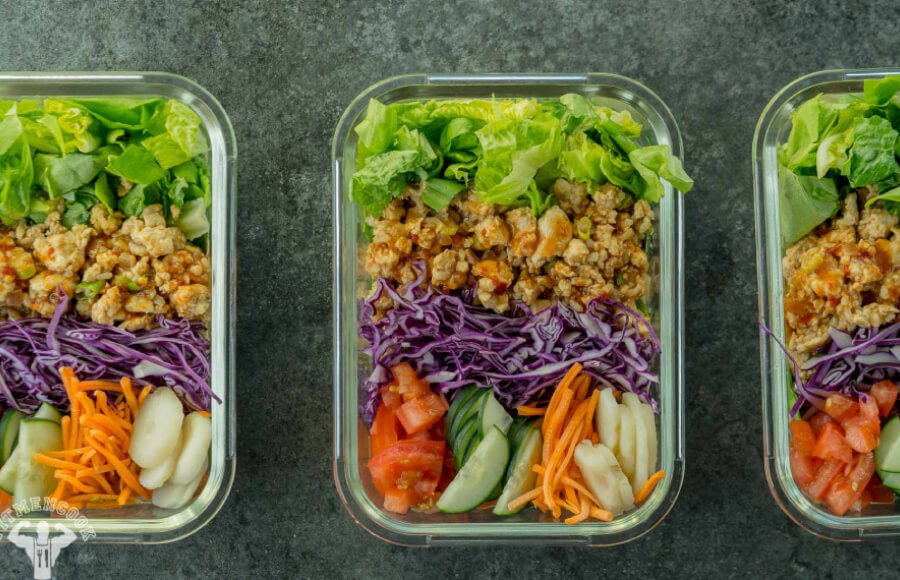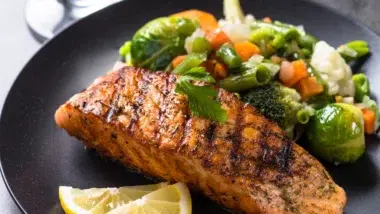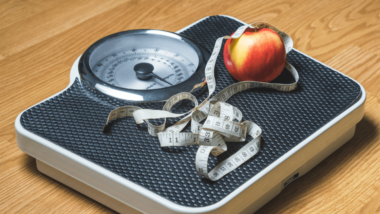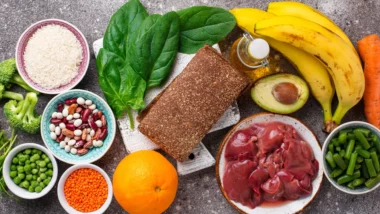For your convenience, here is a breakdown of the material covered in the video. Remember to join the site (FitMenCook.com) so you can ask questions and add your tips as well.
3 FITMENCOOK RULES OF MEALS
Here are some healthy tips and guidelines that I practice when approaching making meals.
- Experimentation in the kitchen is encouraged! Experimenting in the kitchen with different foods and different approaches to healthy diets will not only build your confidence in the kitchen, but also help you become more competent in foods so you know “how” to use them to fuel your diet. One of the biggest advantages of doing this is you begin to understand how your body reacts to different foods and different portion sizes; having this information can help you better tweak your diet for optimal results.
- Get variety and make your meals colorful. You know that eating more fruits and vegetables can provide your body with vitamins and minerals that are essential for good health. But more than that, you need variety! Meaning, everything does not have to be “green.”
The color pigments in various vegetables and fruits represent powerful antioxidants as well as vitamins that can help fuel our bodies and our fitness regimen. When we add variety, we supply our bodies with other vitamins that we may not be getting if we stick to our staple veggies like spinach, broccoli and asparagus.
Take my #3ColorMeal Challenge! Challenge yourself to eat at least 3 different colors at each meal. The colors can only be from a vegetable, fruit, grain or legume, animal based proteins are not included. This is my #3ColorMeal challenge.
- Eat regularly. Don’t try to skip meals in hopes of losing weight. Starving your body will ultimately lead to overeating and even unhealthy food choices. I’ve personally found that eating often, about every 3 hours, helps me with my performance and focus, as well as helps me maintain high energy.
PORTION CONTROL & UNDERSTANDING CALORIES
Across the board, I do not think it is a bad thing for us to practice healthy portion control. For beginners, I especially recommend practicing portion control and calorie counting so that s/he can become more familiar with serving sizes and measured portions. This will help you in near future to be able to “measure portions with your eyes” and not kitchen tools, which is especially important when you are eating out!
PORTION CONTROL TIP: USE SMALLER PLATES AT MEALTIME. WE HAVE A TENDENCY TO WANT TO FILL A LARGE, EMPTY PLATE WITH FOOD. WHEN THE PLATES ARE SMALLER, WE ARE LESS LIKELY TO PILE ON MORE FOOD THAN WE SHOULD BE EATING. IT WORKED FOR ME – TRY IT AND SEE IF IT WORKED FOR YOU.
Online tools to use help you calculate daily amounts of food, serving sizes and calories:
- ChooseMyPlate.gov (http://www.choosemyplate.gov)
- Calculate daily calories and recommended servings and portions of the food groups – http://www.choosemyplate.gov/myplate/index.aspx
- For more advanced fitness enthusiasts, you can calculate your estimated numbers of calories manually. This is what I did when I got serious about my journey in fitness. It took me some to figure everything out, but I’m glad I did. So, before beginning, you should take some time to understand what the Basal Metabolic Rate (BMR) is, which is essentially the number of calories you would burn if you were in bed all day. It’s important to understand the benefits and limitations of using the BMR and the Harris-Benedict formula to estimating your caloric needs.
- Here is a helpful article from my friends at DailyBurn.com on BMR and why it is important
- First calculate your BMR using the formula:
- Men: BMR = 66 + ( 13.7 x weight in kilos ) + ( 5 x height in cm ) – ( 6.8 x age in years )
- Women: BMR = 655 + ( 9.6 x weight in kilos ) + ( 1.8 x height in cm ) – ( 4.7 x age in years )
- Then use the Harris Benedict Formula to factor in your activity level, such as your job, daily routine, and of course, training.
- Llittle or no exercise = BMR x 1.2
- Lightly active (light exercise/work 1-3 days per week) = BMR x 1.375
- Moderately active (moderate exercise/work 3-5 days per week) = BMR x 1.55
- Very active (hard exercise/work 6-7 days a week) = BMR x 1.725
- Extra active (very hard exercise/work 6-7 days a week) = BMR x 1.9
TIP: WHEN IS THE LAST TIME YOU HAVE SEEN YOUR PRIMARY CARE PHYSICIAN? I HIGHLY RECOMMEND YOU SCHEDULING AN APPOINTMENT TO HAVE A PHYSICAL PERFORMED BEFORE BEGINNING ANY FITNESS OR NUTRITION REGIMEN. EQUIP YOURSELF WITH KNOWLEDGE ABOUT YOUR BODY.
5 EASY STEPS TO BUILDING A MEAL PLAN
- Decide how many meals you need to prep and for how many days.
- Beginners should prep a max of 2 meals per day so that they can build their confidence. Start small! When deciding to prep a meal, they should select their “trigger meals,” those meals where they are most susceptible to making unhealthy food choices.
- Advanced enthusiasts can prep at least 3 meals per day for 3days. If you prep more than 3 days worth, I suggest freezing 3 of the meals and keeping only 2 days worth in the refrigerator. You can defrost the meals in the refrigerator the night before you are going to eat them.
- Build a food list! Decide which foods you want to eat. This is easier than building each meal individually. You MUST select at least 1 Wildcard option, a food that you have not had in a while OR a food that you have never had but want to try. Download this chart to help (in pdf).
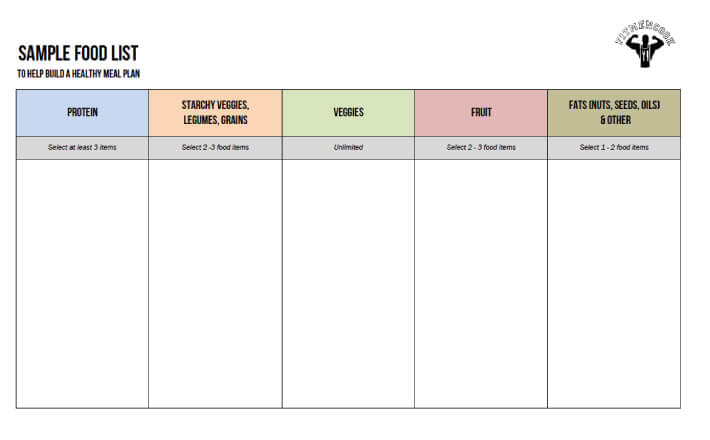
- “Drag & Drop” the foods into a meal plan. Download this meal plan chart to help you get started. And remember to check that each meal passes the #3ColorMeal test!

TIPS: AVOID INCLUDING FAUX-FRIED FOODS SINCE THEY TEND TO GET SOGGY AFTER THEY ARE COOKED AND STORED; FIND MEALS SUCH AS HEALTHY LASAGNAS, QUINOA SALADS, STIR-FRY AND CASSEROLES SINCE THEY ARE EASY TO MAKE IN BULK.
- Add your portions (serving sizes) or calories to each food item. If you calculated your suggested caloric intake or suggested portions using ChooseMyPlate.gov or manually using the BMR formula, then this is where you begin to break down the serving size. To help with accuracy, use sites such as MyFitnessPal.com to input your meals and track calories and macronutrients.
- Find recipes for the meals that use those ingredients. Don’t overcomplicate this!
- For instance, if you have listed chicken and broccoli in one of your meals, then perform a search on FitMenCook.com for “chicken broccoli” or “chicken” or just “broccoli” and see what comes up.
- Other platforms such as Instagram and Pinterest.com and sites such as DailyBurn.com and Bodybuilding.com are great sites to find hearty, healthy recipes.
